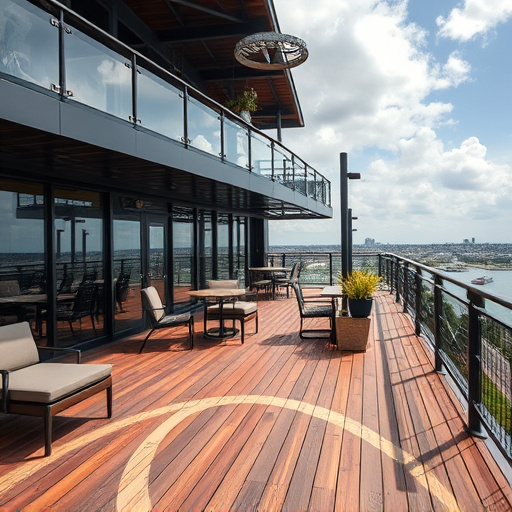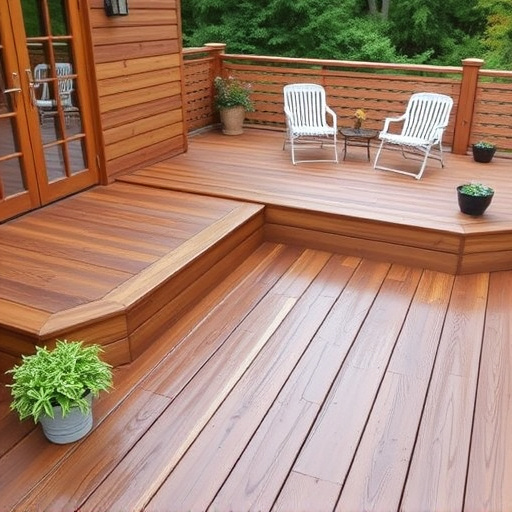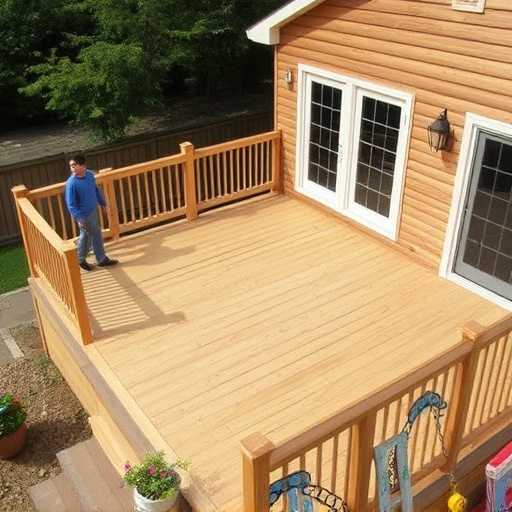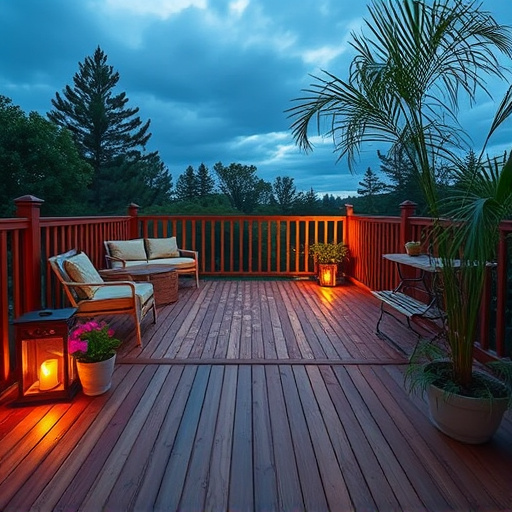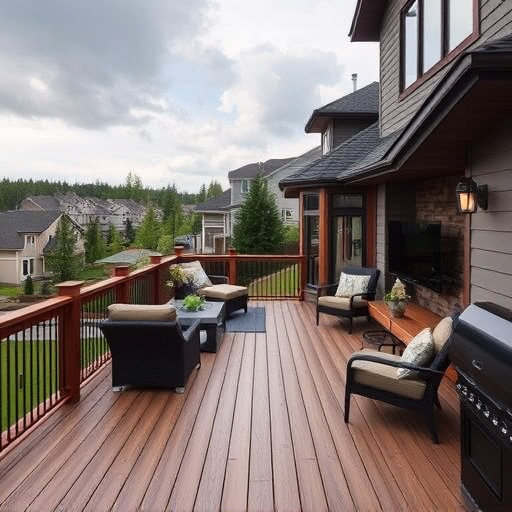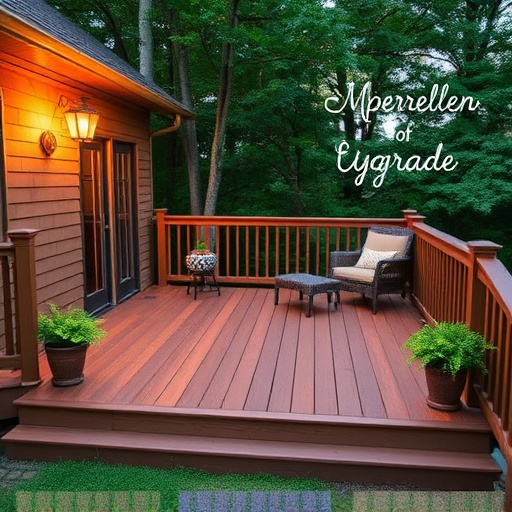Planning a deck requires defining its primary purpose (social gatherings or relaxation) and selecting durable materials like composite decking or treated wood to ensure longevity in varying climates. Proper budgeting is crucial, as it influences material choices; consider affordable options like used wood or recycled plastic lumber while prioritizing long-lasting, low-maintenance materials for cost-effective deck planning.
When it comes to deck planning, choosing the right materials is crucial for a durable, aesthetically pleasing, and budget-friendly outdoor living space. This guide breaks down the essential steps to select materials that align with your deck’s purpose. We’ll explore material considerations balancing durability and style, offer insights on budgeting, and provide tips to find cost-effective options without compromising quality. By following these steps, you’ll be well on your way to creating a dream deck tailored to your needs and preferences.
- Understanding Your Deck's Purpose and Function
- Material Considerations for Durability and Aesthetics
- Budgeting and Selecting Cost-Effective Options
Understanding Your Deck's Purpose and Function
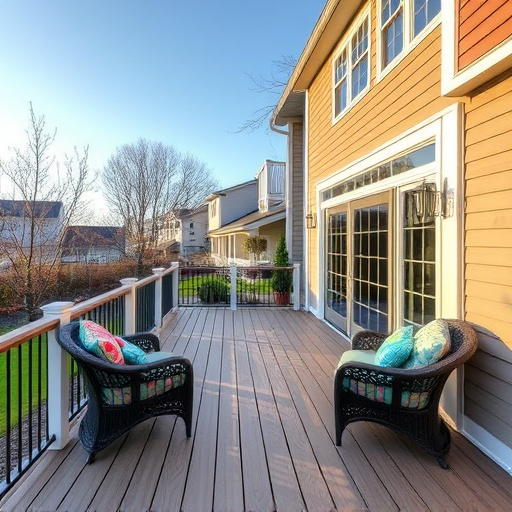
When planning a deck, it’s crucial to understand its intended purpose and function within your outdoor space. Will it primarily serve as an entertainment area for gatherings with friends? Or is it meant to be a serene retreat where you can enjoy a good book? Defining these roles will guide material selection. For instance, if your deck is a social hub, durable and low-maintenance options like composite decking or treated wood might be ideal. These materials withstand heavy foot traffic and harsh weather conditions, ensuring your deck remains inviting for years to come.
Consider the climate in your region as well. If you experience extreme weather events like storms or heavy snowfall, opting for water-resistant and impact-resistant siding could be a smart choice for both aesthetics and longevity. Whether it’s a siding replacement due to storm damage repair or simply an upgrade, choosing materials that align with your deck’s purpose and local environmental conditions will ensure a functional, beautiful, and resilient outdoor living space.
Material Considerations for Durability and Aesthetics
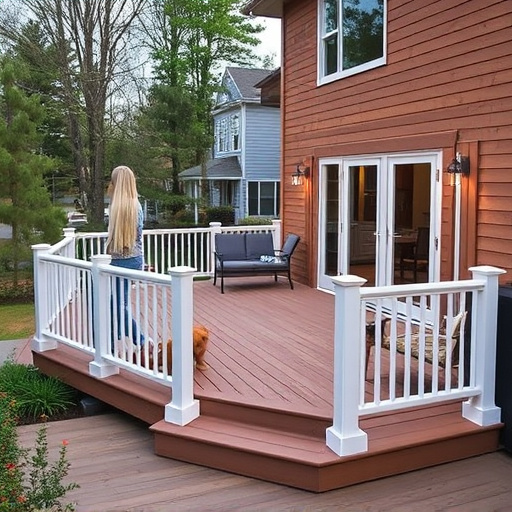
When planning a deck, material choices play a pivotal role in determining both its longevity and visual appeal. For durability, opt for weather-resistant options like composite decking or treated wood. These materials are designed to withstand harsh weather conditions, ensuring your deck remains sturdy for years. Composite decks, in particular, offer low maintenance and resistance to rot, making them an excellent choice for long-term investment.
Aesthetically, consider the color, texture, and style that complement your home’s exterior. Natural wood tones add warmth and charm, while modern composite materials come in a variety of colors and designs. Integrating these choices seamlessly with your overall home exterior services can elevate the curb appeal, creating a welcoming outdoor space. Remember, the right materials not only strengthen your deck but also enhance its visual allure, providing both functionality and beauty for years to come.
Budgeting and Selecting Cost-Effective Options
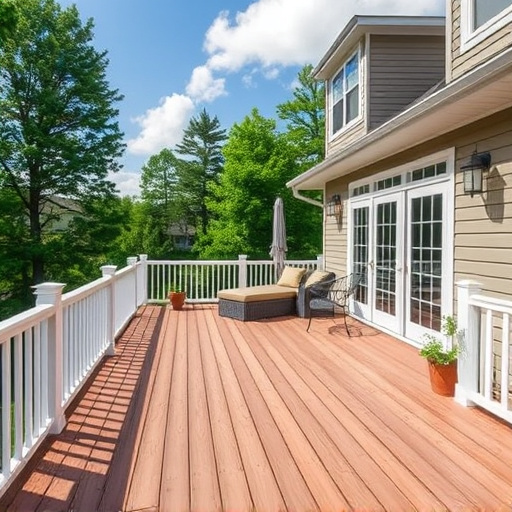
When planning a deck, budgeting is a key consideration as it dictates the materials you can choose. Start by setting a realistic financial framework for your project. Remember, the cost of materials will vary greatly depending on factors like quality, brand, and material type. For a more affordable option, consider exploring secondary markets or recycled materials that can be just as durable.
Within your budget constraints, opting for long-lasting materials is essential to avoid frequent replacements. While wooden decks are classic and aesthetically pleasing, they may require more maintenance over time. Steel or composite decking options, though potentially pricier upfront, offer excellent resilience against weather damage and need less upkeep. For those on a tight budget, exploring used wood or recycled plastic lumber can be a cost-effective alternative to new materials like residential roofing shingles or siding services, ensuring your deck stands the test of time without breaking the bank.
When embarking on deck planning, understanding your deck’s purpose, considering material durability and aesthetics, and budgeting effectively are key steps. By evaluating these factors, you can select materials that enhance your outdoor space while aligning with your financial goals. Remember, the right choices in deck planning can transform your backyard into a vibrant and lasting oasis.









